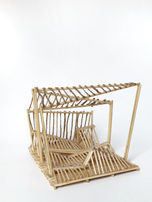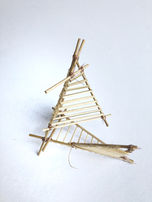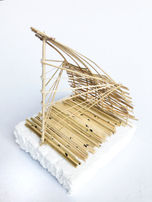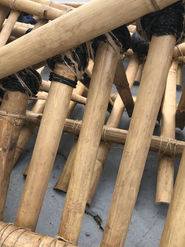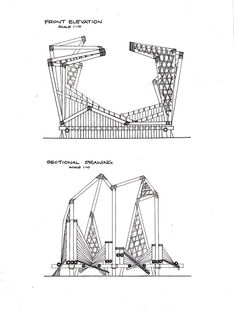PROJECT 1: Models and Tattoos: Expression through Design Elements
and Principles
Taylors Graduate Capabilities
For this assignment, we were asked to design 6 models following with it's tattoo stamps based on the 5 elements- Materials, Line, Shape, Mass and Space. Along with the 16 Principles- Balance, Connection, Contrast, Emphasis, Form, Groping, Imagery, Meaning, Symbolism, Pattern, Placement, Proportion, Rhythm, Scale, Unity and Variety. These models were to have a dimension of 100mm x 100mm x 100mm. At the end of this assignment we had a verbal presentation to relate our ideas and concepts towards our assigned lecturer.
For this assignment, we were asked to design 6 models following with it's tattoo stamps based on the 5 elements- Materials, Line, Shape, Mass and Space. Along with the 16 Principles- Balance, Connection, Contrast, Emphasis, Form, Groping, Imagery, Meaning, Symbolism, Pattern, Placement, Proportion, Rhythm, Scale, Unity and Variety. These models were to have a dimension of 100mm x 100mm x 100mm. At the end of this assignment we had a verbal presentation to relate our ideas and concepts towards our assigned lecturer.
TASKS
Design Elements and Principles are all around us. It is a necessary process needed in design where every art student should know of. This process is the start of every design we have today.
INTRODUCTION
FINAL OUTCOME
PROJECT 2A: DESIGNING WITH ARHT:
Design Principles, Anthropometric and Ergonomic Exploration
INTRODUCTION
For this assignment, we are supposed to design a bamboo structure based on a banal activity. From there we were to include the design elements and principles we've understood from project 1 and further explore to make it suitable for our chosen banal activity. The dimensions given to us was a maximum of 2 square meter cube. We are asked to do some exploration models and as for our final it was a 1:1 scale in bamboo. We were to present our bamboo structure along with a series of orthographic drawings and 10 tattoo stamps. This was a group project.
TASKS
This is where we start to learn about the body measurement and movements. This is very important in architecture because it is applied to all buildings. Only then ca it be suitable for a person to be in it.
PROGRESS
This was the during the start of the bamboo tectonic project. For this, we were exploring with the different tying techniques as well as familiarizing ourselves towards the satay sticks/ bamboo.
These are a few of our test models we've done to explore on it's frame. In all of the test models, all the base is the same as the base was configured from the human squatting position. During this phase, we were exploring on the different frames and roofing system.
This was our final design process in satay sticks. Where our group had finally, decided on a suitable frame and roof structure which best suit our idea. Here you can see the type of shadow casted through the weaving of the bamboo structure on the roof.
BAMBOO PROCESS
Here's a few images during the construction of the bamboo structure. Where we were filing the bamboo, measuring the lengths, marking them adding adhesive, distributing the bamboo into different thickness and etc. Throughout the entire process we've worked from morning till night.
FINAL OUTCOME
This was the final outcome of our bamboo tectonic structure.
PRESENTATION BOARDS
- ORTHOGRAPHIC DRAWINGS -
Our group named our bamboo tectonic structure as "SQUAT-A-TRON". Where we did 3 orthographic drawing at a scale of 1:20. A plan view, 1 elevation and 1 sectional. There's an axono as well as an exploded axonometric to show the details of our bamboo structure. Mainly the type of joints and tying methods we've used to put our structure together.
- TATTOO STAMPS -
The tattoo stamps here were used to further explain our ideas and intention of our bamboo structure which might not be able to see in real life. Where we explained about the shadows, types of joints used as well as the interlocking technique we've used for our base. Besides that, we showed, the squatting movement of the human when being in our structure for both their legs and arms. Most of our tattoo stamps were going more angular as our bamboo tectonic itself was mainly triangular shaped.
REFLECTION & TGC's
From this assignment, I've learned a lot about the types of bamboos, tying knots as well as the different types of joints to cut bamboo. As our group did not use any screws we spent quite a while thinking of ways to tie our bamboo together. Besides that, as a team we managed to communicate with each other and solve any dispute which came at hand. We were able to discipline ourselves and allocate time to do this project as a group despite having our own personal events.









